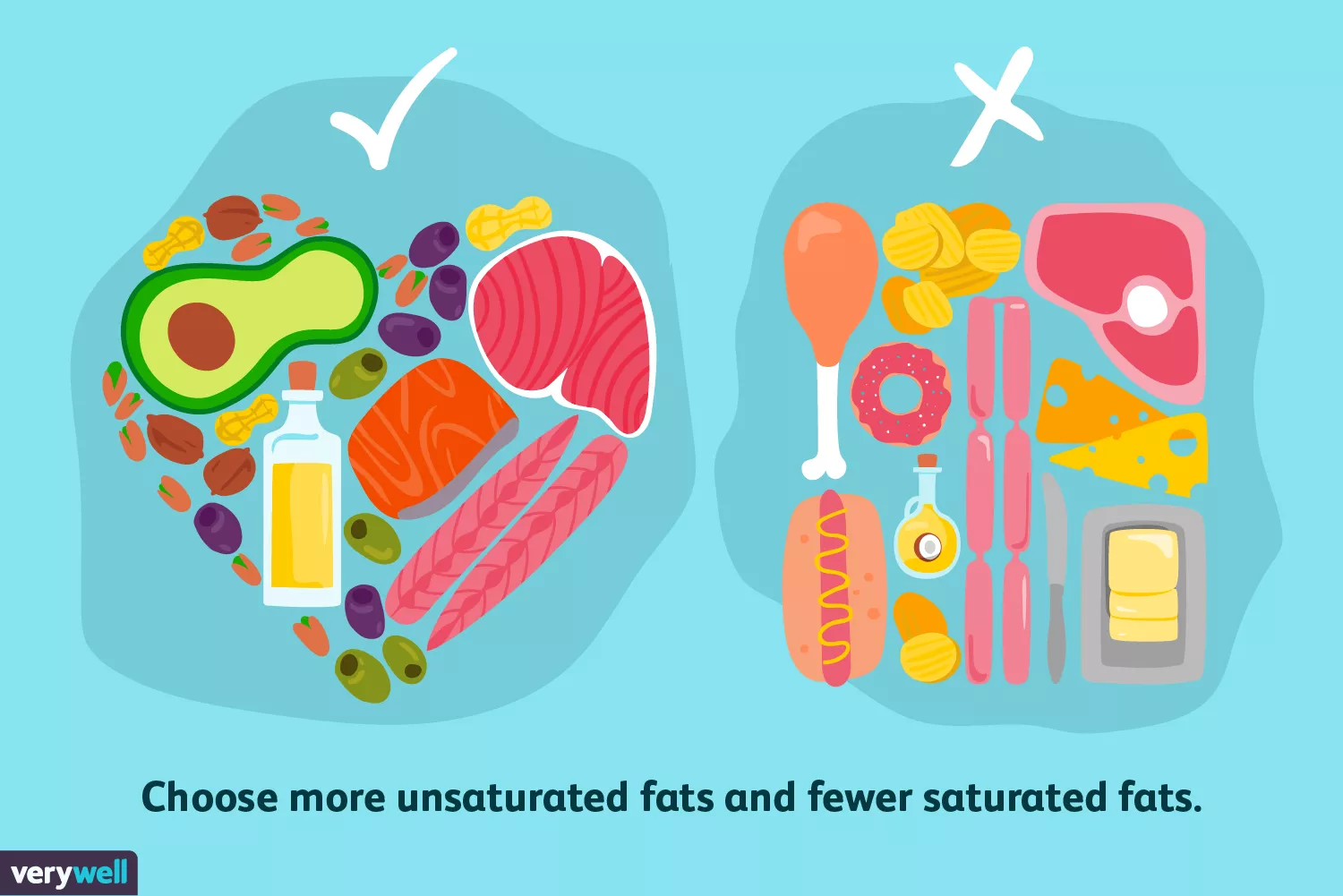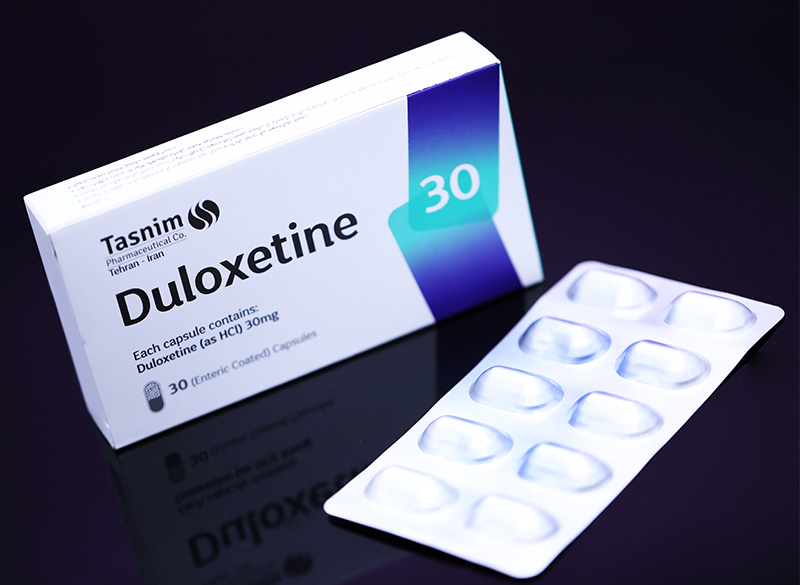Your body needs dietary fat, but it’s best to limit some saturated fats
By Jennifer Moll, PharmD
Table of Contents
- Saturated Fat
- Unsaturated Fat
- Fat vs. Cholesterol
- Which Are Good or Bad?
The main difference between saturated and unsaturated fat is their form at room temperature and their impact on your health.
Dietary fats are important for your body to stay healthy. They provide energy, protect your organs, maintain cell growth, stabilize blood pressure, and help your body to absorb certain nutrients.1 The key is eating healthy types of fat.
Saturated fats (including a type called trans fat) tend to stay solid at room temperature and can cause fatty deposits in blood vessels, leading to atherosclerosis (“hardening of the arteries”). By contrast, unsaturated fats stay liquid at room temperature and are less likely to clog your arteries.
In addition, most unsaturated fats are derived from plant sources (like olive, avocado, and nuts), while most saturated fats come from animal sources (like red meat, poultry, and dairy).
This article takes a look at saturated vs. unsaturated fat, including examples of each and which are more likely to put you at risk of high cholesterol and heart disease. It also explains how to include each in a healthy, balanced diet.
:max_bytes(150000):strip_icc():format(webp)/697517-article-saturated-fats-and-unsaturated-fats0230389b-3f6e-4352-95e9-6bb1f3e168f93-59efb531054ad90010e4d96e.png)
What Is Saturated Fat?
Saturated fats are called “saturated” because of their chemical structure. All fats are made up of carbon, hydrogen, and oxygen molecules. Saturated fats are “saturated” with hydrogen atoms. They have the greatest number of hydrogen atoms possible and no double bonds in their chemical structure.
For one, this chemical structure means that, like butter, they become solid at room temperature.
Foods that contain saturated fats include:2
- Animal meat including beef, poultry, pork
- Certain plant oils such as palm kernel or coconut oil
- Dairy products including cheese, butter, milk, ice cream, sour cream, and cream cheese
- Processed meats including bologna, sausages, hot dogs, and bacon
- Pre-packaged snacks and desserts including crackers, chips, cookies, and pastries
11 Snacks for a Healthy Heart
Why Limit Saturated Fats in Your Diet
Saturated fat should make up less than 6% of your daily caloric intake, according to the American Heart Association (AHA) recommendations.2 Limiting your saturated fat intake, especially certain types of saturated fat could improve your heart health.
Some studies have shown that consuming a high amount of saturated fats may increase your low-density lipoprotein (LDL), also known as “bad” cholesterol. Some research indicates high LDL levels can increase your risk of heart disease.3 However, there have been other studies that say saturated fat does not actually have a negative effect on your heart.4
The more saturated fat you eat, the more LDL you seem to have in your body. However, some studies have shown that not all LDL is bad. Saturated fat increases the amount of large, buoyant LDL you have in your blood. These larger LDL particles do not appear to increase your risk of heart disease.
On the other hand, small, dense LDL has been shown to contribute to atherosclerosis—the build-up of plaque in your arteries—which leads to heart disease. Eating saturated fat doesn’t appear to increase your small, dense LDL. In a few cases, the risk of plaque build-up even went down when saturated fat was consumed.5
The type of saturated fat-containing foods you eat also seems to make a difference in your heart health. One large study suggested that consuming dairy products may actually lower the risk of cardiovascular disease.6 At the same time, including processed meats in your diet could increase your risk of cardiovascular disease.
Saturated Fat: Good or Bad?
Based on available evidence, experts disagree on how important it is to limit saturated fats in your diet. Still, the AHA does recommend limiting it. Fats from dairy products are considered a safer choice. And all experts agree that processed meats should be avoided.
Trans Fats
Although not the same as saturated fat, trans fat can also increase your risk of heart disease. Trans fat raises LDL cholesterol levels and lowers protective HDL cholesterol levels. These changes in cholesterol are associated with a higher risk of heart disease.
Trans fat can be found in small amounts in animal foods, such as red meat or full-fat dairy. But most trans fats are found in processed foods, fried foods, and commercially baked goods (pastries, pies, cookies, crackers, and other snack foods).27
What Is Unsaturated Fat?
Unsaturated fats are typically liquid at room temperature. They differ from saturated fats in that their chemical structure contains one or more double bonds.
They can be further categorized as:2
- Monounsaturated fats: This type of unsaturated fat contains only one double bond in its structure. Monounsaturated fats are typically liquid at room temperature and include canola oil and olive oil.
- Polyunsaturated fats: This type of unsaturated fat contains two or more double bonds in its structure. They are also liquid at room temperature. Polyunsaturated fats include safflower oil, sunflower oil, and corn oil.
Monounsaturated and polyunsaturated fats reduce harmful LDL cholesterol levels, reduce inflammation, and provide nutrients that your body needs to develop and maintain your cells. Polyunsaturated fats provide omega-6 and omega-3 fatty acids that are good for your heart and essential to your health.8
Dietary Recommendations
The American Heart Association (AHA) recommends that between 20% and 35% of your total daily calories should consist of fat.9 Most of your intake should be from unsaturated fat. However, studies suggest that consuming only unsaturated fats may not be as heart-healthy as once thought, and consuming saturated fats may not be as harmful.10
Incorporating Unsaturated Fats in Your Diet
Monounsaturated and polyunsaturated fats should make up most of your daily fat intake, according to AHA recommendations.
Examples of foods that contain unsaturated fats include:2
- Nuts
- Plant oils
- Certain fish like salmon, tuna, and anchovies, which contain omega-3 unsaturated fatty acids
- Olives
- Avocados
Healthiest Oils to Lower Your Cholesterol
Difference Between Fat and Cholesterol
Cholesterol and fats are both lipids. They are found in the food you eat, and they circulate in your bloodstream. Cholesterol has a more complex chemical structure compared to fats.
In the body, cholesterol is bound to protein as low-density lipoprotein (LDL) or high-density lipoprotein (HDL). LDL may increase your risk of heart disease, while HDL, often called “good” cholesterol, is considered to be protective against heart problems.11
How Many Grams of Fat Your Body Needs Daily
Which Fats Are Good or Bad in Your Diet?
If you are watching your cholesterol and triglyceride levels (another type of fat that circulates in the blood), try to include a variety of healthy foods like lean meats, vegetables, fruits, legumes, and whole grains.
More research is needed to understand the influence of unsaturated and saturated fats on cardiovascular disease. Although there has been research suggesting that saturated fats are not as bad for heart health as they were once thought, healthcare providers still usually recommend limiting your intake.12
A handful of walnuts or a lean piece of beef is a better choice for your meals than a bag of chips or sausage links. Both may contain fats, but nuts and lean meat also contain vitamins, minerals, and other healthy nutrients.
The chips and processed meat, meanwhile, may be higher in sugar, chemical preservatives, salt, and trans fats. All of these can have a negative effect on your lipid levels and heart health.
Can You Eat Too Much Unsaturated Fat?
Both unsaturated fat and saturated fat add calories (and weight to your waistline) if you consume too much. Practicing moderation is the best way to stay healthy. Additionally, the type of fat-containing foods you consume can make a difference in your lipid levels.
Summary
There’s a lot of disagreement about how much saturated fat is “safe” or “healthy.” Some types of saturated fat are associated with heart disease.
Saturated fat found in beef, butter, margarine, and other rich foods may not increase your cardiovascular risk simply because they raise LDL. However, more research is needed to clarify the conflicting studies, so your best bet might be to limit the saturated fats in your diet anyway.
Instead, choose unsaturated fats as your main source of fats and lipids. This will help you to avoid unhealthy sources of saturated fats, such as processed meats, that are known to increase the risk of health problems.
Reference<https://www.verywellhealth.com/difference-between-saturated-fats-and-unsaturated-fats-697517



